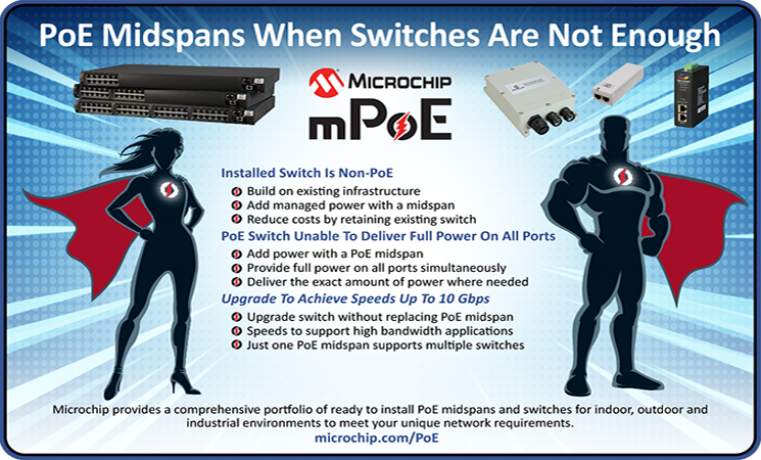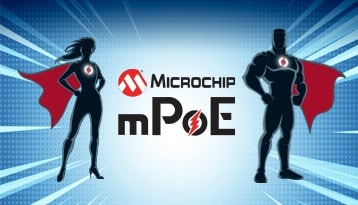PoE Midspans When Switches Are Not Enough
Learn about the benefits of using PoE midspans versus PoE switches in your design.
Power over Ethernet (PoE) has been powering many devices since it’s invention in 1997. Initially, most Ethernet switches could not provide power. This was when the PoE midspan was introduced. Inserted after the switch, the midspan would inject power onto an Ethernet line to provide a device both data and power.
Over time, switches began to offer both power and data. PoE switches have become more prevalent in the marketplace at price points that are very attractive. Thus, many today believe they must make a choice between choosing a PoE switch, or a PoE midspan. This is simply not the case. It is not a matter of either a PoE switch or midspan. The decision should be based upon the situation.

When to use a PoE midspan?
If there is already a switch installed that does not provide power, there is no need to replace the entire switch. The introduction of a midspan into the environment provides devices the power required at an incremental cost with minimal interruption. You can build on the existing infrastructure and add features such as Power Management for minimal investments.
However, even if there is a PoE switch installed, or a new PoE switch is being installed, the switch may not be able to provide the required power on all ports. Every switch comes with a Power Budget. The Power Budget is the maximum amount of power the switch can provide. Few PoE switches can provide full power on all ports. If the power demand of the connected devices requires more power than the switch can provide, the easiest and least expensive way of supplementing power is by adding a PoE midspan to inject power on the ports that do not have any.
There are also many benefits that can be derived by isolating an Ethernet switch from the PoE midspan. If a switch does fail, PoE midspans will still provide power to the connected devices. Additionally, midspans originally supported data rates up to 1 GPS but are now capable of supporting up to 10 GPS. When such a midspan is installed, to increase anticipated network speeds, only the switch must be replaced. This enables network managers to upgrade the network without replacing their entire infrastructure.
Finally, midspans offer extreme flexibility. Not every port on a switch may require power. Midspans are cable of supporting multiple switches to provide power to only the ports that have power requirements.
Providing power where and whenneeded at the proper voltage plus enabling upgrades to increase speeds all while providing reducing failure rates makes the midspan a perfect solution even when PoE switches are deployed.
To learn more about PoE midspans visit https://www.microchip.com/en-us/products/power-over-ethernet/poe-systems.
